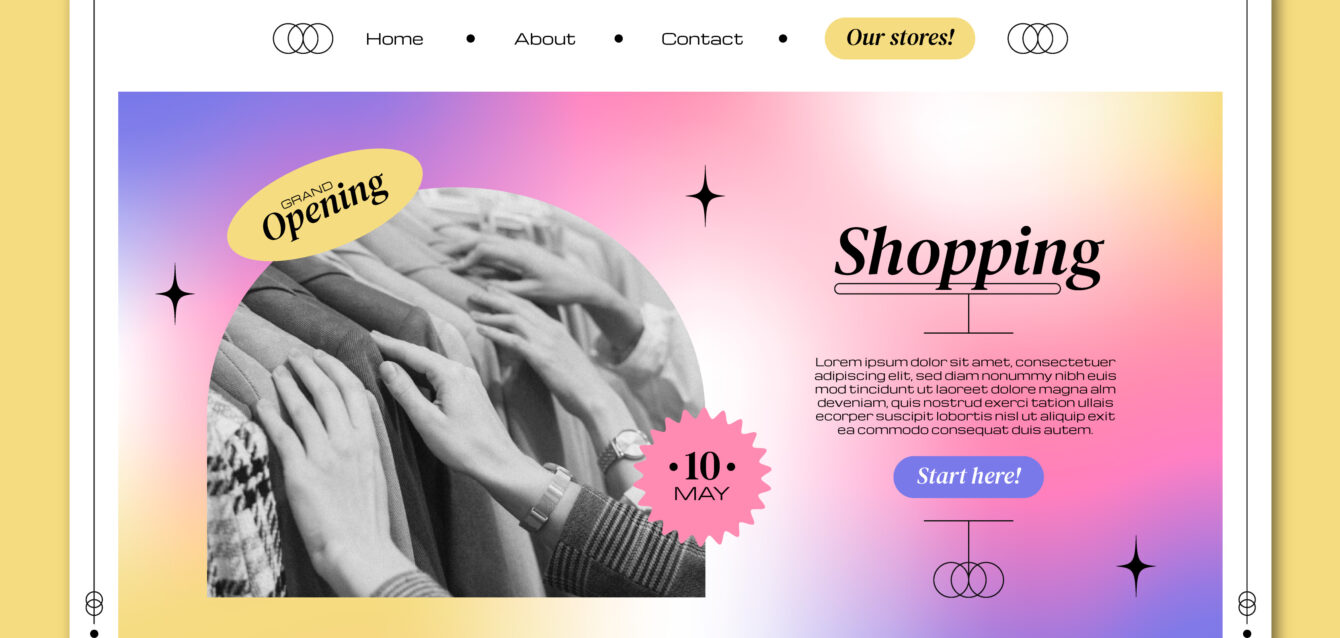In the fast-paced world of online retail, your e-commerce website serves as the cornerstone of your business. A well-designed e-commerce site is more than just a digital storefront; it’s a powerful tool that influences purchasing decisions, builds trust, and drives revenue. Effective web design for e-commerce is about creating an engaging, user-friendly, and efficient shopping experience that guides customers seamlessly from browsing to checkout.
Why E-Commerce Web Design Matters
- First Impressions Count
In the e-commerce industry, your website’s design is often the first interaction a potential customer has with your brand. A professional, polished design instantly establishes credibility and sets the tone for their entire shopping experience. A poorly designed website, on the other hand, can turn customers away before they even have a chance to explore your products. - Enhanced User Experience (UX)
Good e-commerce design focuses on the user experience. A site that’s easy to navigate, visually appealing, and functional ensures that customers can easily find what they’re looking for. In a competitive online marketplace, providing a seamless shopping experience is essential to retain customers and encourage repeat purchases. - Increased Conversion Rates
An intuitive, well-designed e-commerce site has a direct impact on conversion rates. A clean layout, clear calls-to-action, and a smooth checkout process can significantly reduce cart abandonment and boost your sales. - Optimized Mobile Experience
With an increasing number of customers shopping on mobile devices, it’s crucial that your e-commerce website is fully responsive. A mobile-optimized design ensures that users have a positive experience regardless of the device they’re using, which can increase engagement and sales. - Brand Consistency
Your website design should reflect your brand’s identity and values. Consistency in design elements, such as colors, fonts, and imagery, helps build trust and makes your brand more memorable to customers.
Best Practices for E-Commerce Web Design
- Simplify Navigation
Clear, easy-to-use navigation is essential for an effective e-commerce site. Categories should be organized logically, and search functions should be intuitive, allowing users to find products quickly. A well-designed navigation system reduces frustration and encourages customers to explore more products. - High-Quality Product Images
Product images are one of the most important elements on an e-commerce website. High-quality images that show your products from multiple angles help customers get a clear understanding of what they’re purchasing. Zoom functionality, 360-degree views, or videos can also enhance the shopping experience by providing more detail. - Streamlined Checkout Process
A complicated or lengthy checkout process is a major contributor to cart abandonment. Simplify your checkout process by minimizing the number of steps, offering guest checkout options, and clearly displaying shipping costs and delivery times. Offering multiple payment options, such as credit cards, PayPal, and mobile wallets, can also increase conversion rates. - Call-to-Action Buttons (CTAs)
Strong, visible CTAs guide customers toward the next step in the purchasing process. Whether it’s “Add to Cart,” “Shop Now,” or “Check Out,” your CTAs should be easy to find, clearly labeled, and encourage users to take action. - Optimized Product Pages
Your product pages should provide all the information a customer needs to make an informed purchase decision. This includes clear product descriptions, pricing, availability, and shipping information. Adding user reviews and ratings also builds trust and provides social proof, which can encourage others to buy. - Fast Loading Times
Speed is critical in e-commerce. Slow-loading pages can lead to high bounce rates and lost sales. Optimize your website’s performance by compressing images, using a reliable hosting service, and employing other performance-enhancing techniques to ensure fast loading times. - Mobile-First Design
With more people shopping on their mobile devices, a mobile-first design approach is essential. Make sure your website is fully responsive, with mobile-friendly layouts, easy-to-click buttons, and fast load times to provide a seamless shopping experience on smartphones and tablets. - Search and Filter Options
The ability to search and filter products based on different criteria (such as size, color, price range, etc.) is critical for e-commerce sites with large inventories. This feature helps customers quickly find the products they’re interested in and creates a more efficient shopping experience. - Personalization Features
Personalizing the shopping experience can increase customer engagement and loyalty. Features like product recommendations based on browsing history, personalized offers, or an option to save favorite items can enhance the user experience and drive sales. - Security and Trust Signals
Customers need to feel confident that their data is secure when making online purchases. Ensure that your e-commerce site has SSL encryption, a secure payment gateway, and clearly visible trust badges, such as those indicating your site’s payment security or refund policy.
Trends in E-Commerce Web Design
- Minimalist Design
Simplicity is key when it comes to e-commerce design. Minimalist websites with clean layouts and uncluttered pages allow customers to focus on the products and make the shopping experience more enjoyable. - Augmented Reality (AR)
Augmented reality is becoming increasingly popular in e-commerce, especially for products like furniture or clothing. AR allows customers to virtually “try on” products or see how an item will look in their space before making a purchase, creating a more immersive and interactive experience. - Chatbots and AI Assistance
Chatbots powered by artificial intelligence are increasingly being integrated into e-commerce websites to offer instant customer support. They can answer questions, guide users through the purchase process, and help resolve issues quickly, providing a more efficient shopping experience. - Sustainable and Eco-Friendly Design
As sustainability becomes a priority for consumers, more e-commerce brands are embracing eco-friendly design. This includes showcasing sustainability efforts, using green colors, and offering eco-conscious products. - Social Media Integration
Social media platforms are becoming shopping destinations themselves. Integrating social media feeds and product links into your website allows customers to shop directly from Instagram, Facebook, or Pinterest, blending the social and shopping experience.
Conclusion
Effective e-commerce web design is critical to the success of your online store. From user-friendly navigation and fast loading times to secure payment options and a mobile-first approach, every design element contributes to providing an exceptional shopping experience. By implementing best practices and staying on top of design trends, you can create a site that not only attracts visitors but also converts them into loyal customers.
Ready to transform your e-commerce website?
Let’s work together to create a seamless, user-centered design that drives sales and builds your online presence!







